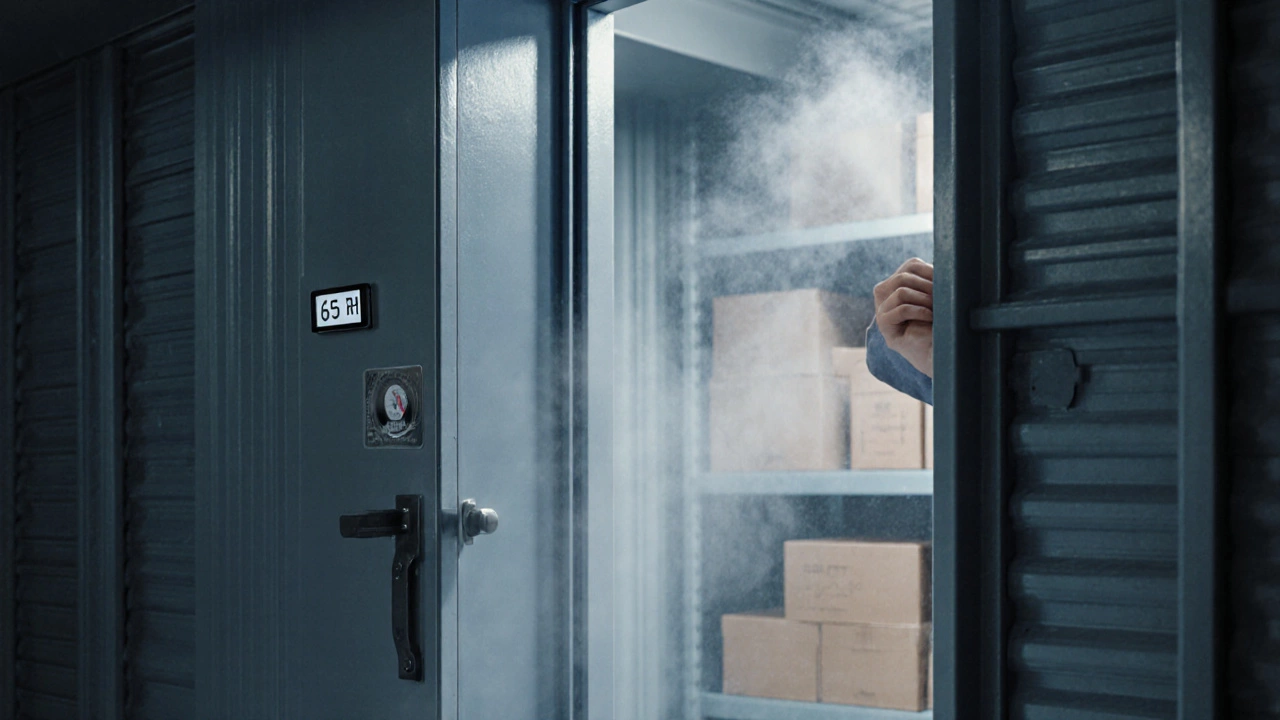
Top Moisture Absorbers for Keeping Your Storage Unit Dry
Discover the top moisture absorbers for storage units, how they work, and practical tips to keep your stored items dry and safe.
When working with calcium chloride, a white, crystalline salt (CaCl₂) prized for its moisture‑absorbing power. Also known as calcium salt, it acts as a versatile agent in humidity control, mold prevention, and safe de‑icing. Humidity control, the practice of keeping air moisture within a target range is essential for any space where furniture lives, whether a classroom desk room, a home office, or a garden patio shelter. By releasing heat when it dissolves in water, calcium chloride lowers the relative humidity and keeps wooden legs, upholstered frames and metal fittings from swelling or rusting. Mold prevention, the strategy of stopping fungal growth by removing excess moisture becomes far easier when the surrounding air stays dry; the salt’s hygroscopic nature pulls water out of the air, starving spores that would otherwise turn a sofa cushion or a storage cabinet into a breeding ground. When you place outdoor garden furniture under a shed or store a classroom chair stack in a basement, a small sachet of calcium chloride can keep the environment dry enough to avoid the musty odors and structural damage that many teachers and homeowners dread. Another common challenge for anyone with outdoor seating is ice and snow. De‑icing, the process of melting ice on surfaces to improve safety and protect materials using calcium chloride is a low‑cost, fast‑acting solution that doesn’t corrode metal as aggressively as sodium chloride. When you spread a thin layer on a patio where a lounge set sits, the salt lowers the freezing point of water, preventing ice from forming on the legs and frames. This not only keeps the furniture stable and safe to sit on, but it also reduces the risk of cracks in wooden surfaces caused by freeze‑thaw cycles. Moreover, because calcium chloride works at lower temperatures, it stays effective even on chilly UK winters, making it a go‑to product for schools, lecture halls with outdoor steps, and homeowners who want their garden benches to stay usable year‑round. Beyond these practical uses, calcium chloride supports long‑term furniture preservation, the set of methods that extend the life and appearance of seating, storage, and work surfaces. By placing desiccant packs in storage cabinets, you can keep the lacquer on a wooden desk from bubbling, the fabric on a recliner from absorbing damp odors, and the metal springs in a sofa bed from rusting. The compound also works well alongside other natural remedies—like vinegar for surface cleaning—by ensuring the area stays dry after the wipe‑down, preventing re‑growth of mold. In classrooms where desks see constant use, or in offices where ergonomic chairs are an investment, a simple calcium chloride solution can save thousands in replacement costs. calcium chloride is more than a chemical; it’s a practical tool that links humidity control, mold prevention, de‑icing, and furniture preservation into one easy‑to‑apply package. Below you’ll find articles that dive deeper into how this salt can keep your sofas, garden chairs, storage units and even classroom equipment in top shape, plus step‑by‑step tips on using it safely and efficiently.

Discover the top moisture absorbers for storage units, how they work, and practical tips to keep your stored items dry and safe.